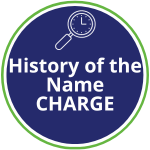CHARGE syndrome is a recognizable genetic syndrome with known pattern of features. It is an extremely complex syndrome, involving extensive medical and physical difficulties that differ from child to child. CHARGE syndrome is correlated with genetic mutation to CHD7 and the prevalence of CHARGE syndrome is 1:10,000-1:15,000 live births.
Babies with CHARGE syndrome are often born with life-threatening birth defects. They spend many months in the hospital and undergo many surgeries and other treatments. Swallowing and breathing problems make life difficult even when they come home. Most have hearing  loss, vision loss, and balance problems that delay their development and communication. Despite these seemingly insurmountable obstacles, children with CHARGE syndrome often far surpass their medical, physical, educational, and social expectations. One of the hidden features of CHARGE syndrome is the determination and strong character these children display.
loss, vision loss, and balance problems that delay their development and communication. Despite these seemingly insurmountable obstacles, children with CHARGE syndrome often far surpass their medical, physical, educational, and social expectations. One of the hidden features of CHARGE syndrome is the determination and strong character these children display.
While extensive research has been conducted, there is still a lot to learn. Continued research is needed to help us understand the medical and developmental challenges facing individuals with CHARGE. This understanding leads the way to medical and educational interventions and therapies which help people with CHARGE syndrome overcome many of the obstacles in their lives.
![]()










